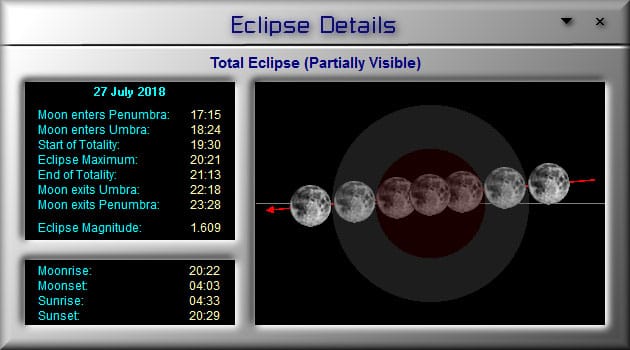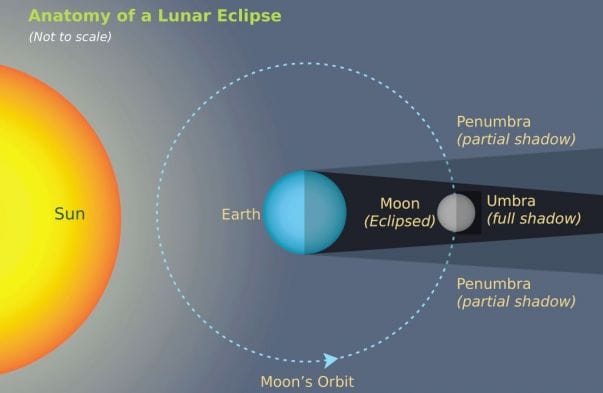
July 27, 2018 sees the longest total lunar eclipse of the 21st century.
While this eclipse will be completely visible in Eastern Africa and Central Asia, viewers in Western Africa, Eastern Asia, South America, Europe, and Australia will only catch a partial glimpse.
The times in the image above (taken from my LunarPhase Pro software) are in UT (Universal Time / GMT), so you can use them to calculate when events occur where you live.
If you live in the Americas, you’re out of luck with this eclipse as it’s not visible there.
For those in Western Europe, the Moon will already be about half way through totality when the Moon rises. That should lead to an interesting Moon rise in evening twilight.
It’s very difficult for the human eye to discern a brightness or colour change on the Moon during the Penumbral phase of an eclipse.
The Moon’s face will take on a copper or red colour during totality. A darkening of the Moon will be seen moving across its face during the Umbral phase of the eclipse, before and after Totality, as the Moon moves into and out of the Earth’s shadow.

The Moon is in shadow because the Earth sits between the Sun and the Moon (causing the Earth’s shadow to fall on the Moon).
The reason for the Moon’s red colour is because some stray rays of light pass through the Earth’s atmosphere which scatters the shorter (blue) wavelengths of light and allows the longer (red) wavelengths to continue on to the Moon.


